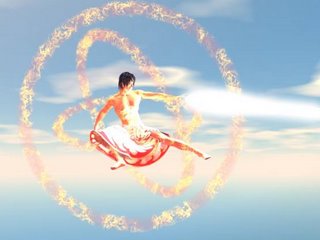
Dear readers,
Following is the extract from chapter 8 of Vishnu Puran.
I found this quite interesting.
Regards,
Souvik
CHAP. VIII.
Origin of Rudra: his becoming eight Rudras: their wives and children.
Sacrifice of Daksha.
PARÁŚARA.--I have described to you, oh great Muni, the creation of Brahmá, in which the quality of darkness prevailed. I will now explain to you the creation of Rudra
In the beginning of the Kalpa, as Brahmá purposed to create a son, who should be like himself, a youth of a purple complexion appeared, crying with a low cry, and running about Brahmá, when he beheld him thus afflicted, said to him, "Why dost thou weep?" "Give me a name," replied the boy. "Rudra be thy name," rejoined the great father of all creatures: "be composed; desist from tears." But, thus addressed, the boy still wept seven times, and Brahmá therefore gave to him seven other denominations; and to these eight persons regions and wives and posterity belong. The eight manifestations, then, are named Rudra, Bhava, Śarva, Iśána, Paśupati, Bhíma, Ugra, and Mahádeva, which were given to them by their great progenitor. He also assigned to them their respective stations, the sun, water, earth, air, fire, ether, the ministrant Brahman, and the moon; for these are their several forms The wives of the sun and the other manifestations, termed Rudra and the rest, were respectively, Suverchalá, Ushá, Vikesí, Sivá, Swáhá, Diśá, Díkshá, and Rohiní. Now hear an account of their progeny, by whose successive generations this world has been peopled. Their sons, then, were severally, Sanaiśchara (Saturn), Śukra (Venus), the fiery-bodied Mars, Manojava (Hanumán), Skanda, Swarga, Santána, and Budha (Mercury).
It was the Rudra of this description that married Satí, who abandoned her corporeal existence in consequence of the displeasure of Daksha 5. She afterwards was the daughter of Himaván (the snowy mountains) by Mená; and in that character, as the only Umá, the mighty Bhava again married her.




